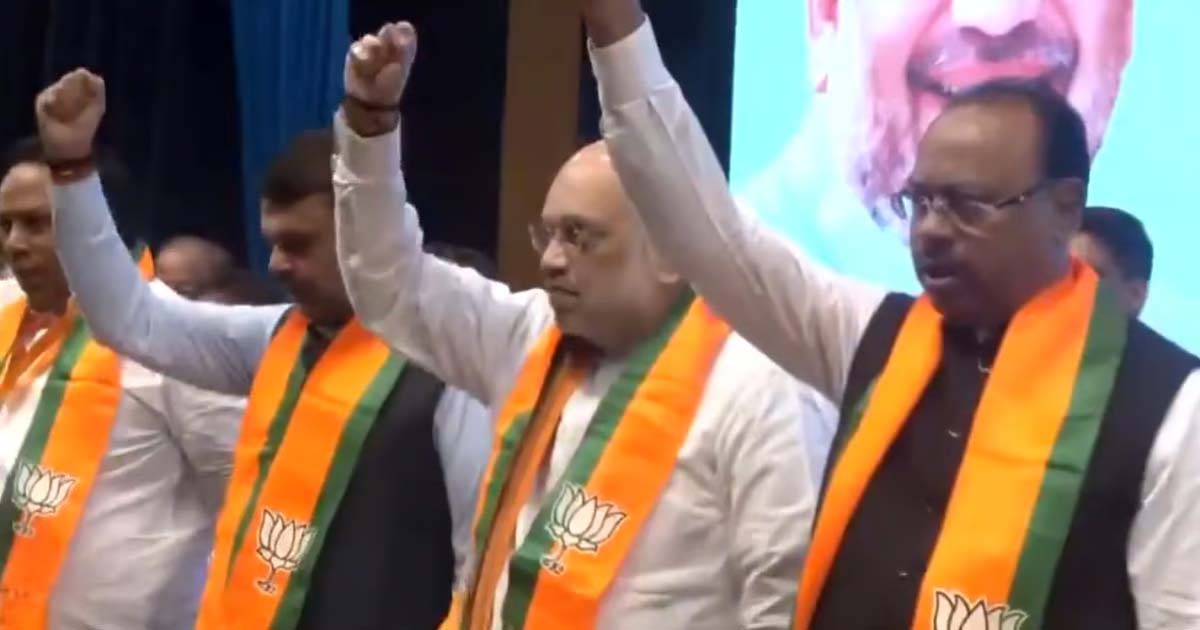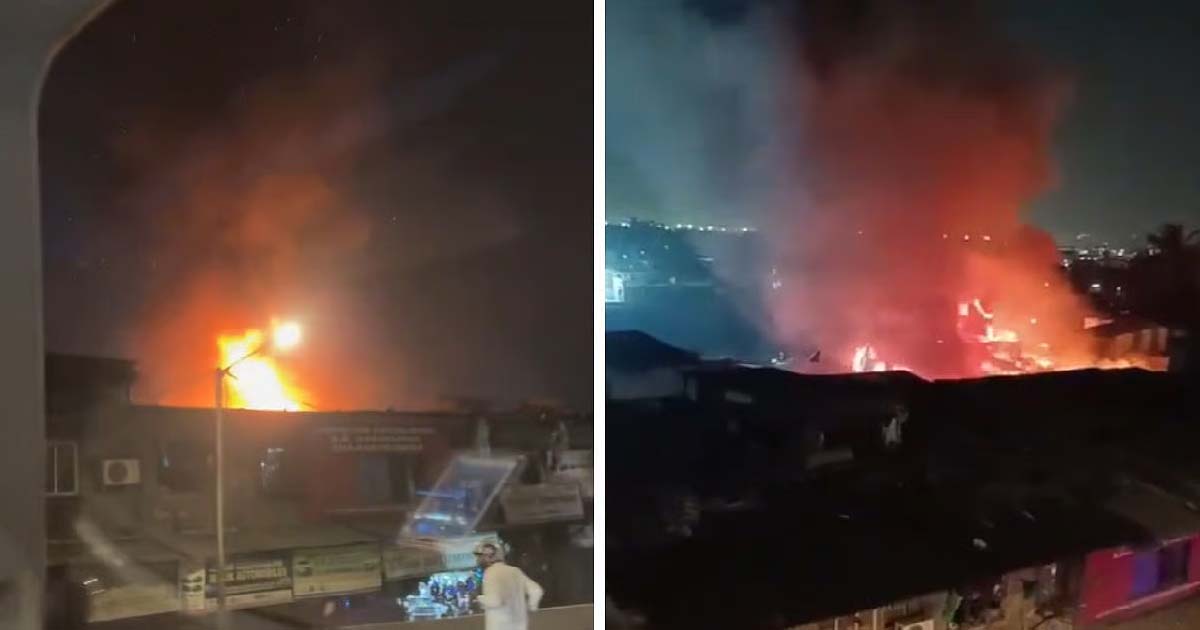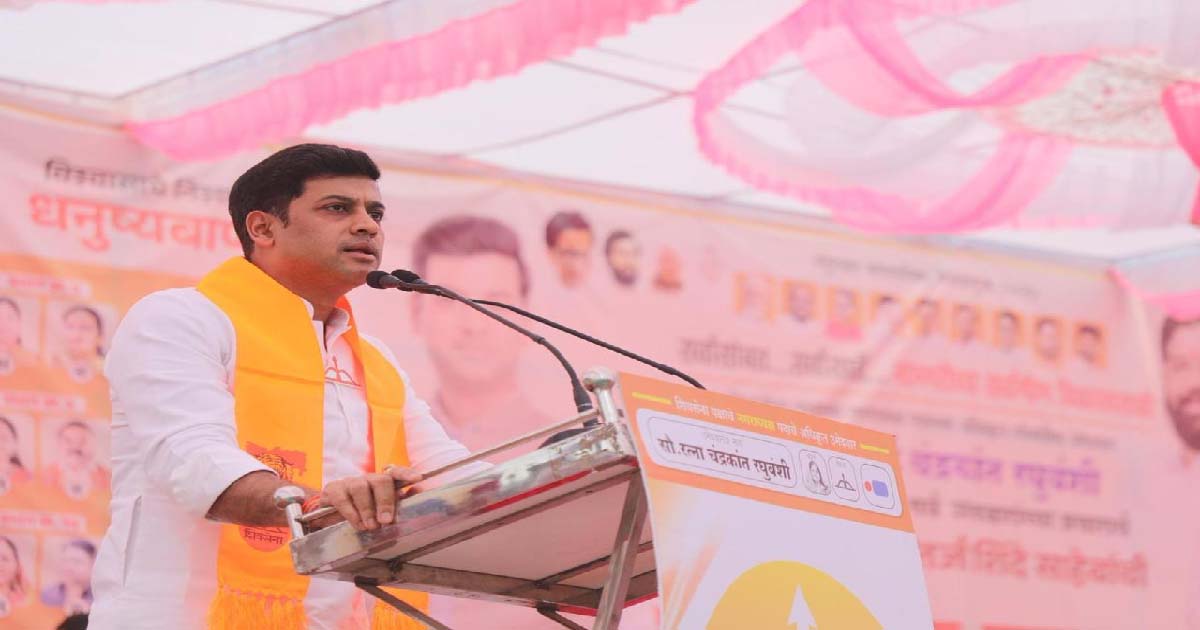Maharashtra
Elections 2024: Will BJP’s New Social Engineering Strategy In Maharashtra Reap Haryana Like Results

Mumbai: The Maharashtra government, hoping to replicate the success in Haryana, has reached out to several key communities including – the Scheduled Castes (SC) and the Other Backward Classes (OBCs).
The BJP strategy of consolidating the Haryana caste vote by reaching out to various communities and leveraging its influence with the OBC voters has paid rich dividends. With this proven strategy, the Mahayuti government too appears to be focusing on various small groups and special decisions are being taken tailor-made for these segments.
Political analysts say that the BJP’s success in Haryana, driven by impactful social and infrastructure schemes, aggressive campaigning, and the consolidation of anti-Jat votes, serves as a blueprint that Fadnavis is already applying in Maharashtra. With the opposition making efforts to woo the influential Maratha community to undermine the BJP, Fadnavis and the BJP are making it clear that they are committed to working for the welfare of all communities, including Marathas.
BJP’s Outreach Efforts
The BJP’s outreach is rooted in addressing the needs and aspirations of all citizens, whether they belong to urban centers, rural areas, or specific social groups. The success of Fadnavis lies in his ability to strike a balance between addressing Maratha’s concerns and ensuring other communities, such as OBCs, Dalits, and others, feel included in the BJP’s vision for Maharashtra.
Haryana’s win was built on a robust campaign strategy that emphasized inclusivity, social welfare, and infrastructure development. In Maharashtra, Fadnavis is implementing similar strategies, not only wooing key voter segments but also addressing the needs of all communities. For the BJP, the Haryana results underscore the power of targeting all voter segments and offering a well-rounded campaign that addresses broader societal concerns.
In Maharashtra, where the Maratha community holds significant sway, the BJP under Fadnavis seems to have adopted a similar approach. He is actively engaging with issues that impact the Maratha community, from economic concerns to social justice, alongside efforts to bring about development that benefits the entire state and all communities. His approach is one of inclusivity, aiming to unify rather than divide.
On Thursday, the Maharashtra cabinet took several key decisions, including approving an ordinance giving constitutional status to the state Scheduled Caste Commission and giving its nod to a proposal urging the Centre to hike the income criterion for inclusion in the creamy layer among OBCs from Rs 8 lakh a year to Rs 15 lakh.
The state Cabinet has also decided to allocate several allocate economic development corporations to different communities.
These include the Sola Kulswamini Economic Development Corporation for the Vani community, the Brahmlin Acharya Divyanand Puriji Maharaj Economic Development Corporation for the Lohar community, Sant Namdev Maharaj Economic Development Corporation for the Shimpi community, and Shri Krishna Economic Development Corporation for the Gawli community.
Additionally, corporations for the Lohar and Nathpanthi communities will also be established. An outlay of Rs 50 crore will be allocated for this initiative.
These decisions are seen as a part of the Mahayuti’s social engineering efforts to please smaller groups in the Maharashtra elections. Ahead of the elections in Haryana, where the BJP was perceived to be on the back foot after ruling the state for two consecutive terms, the state government had hiked the creamy layer ceiling from RS 6 lakh to 8 lakh.
The BJP’s approach in Maharashtra is not just a replication of the Haryana strategy, but a tailored response to the state’s unique political landscape, ensuring that it appeals to a broader and more diverse electorate.
“As Maharashtra gears up for its assembly elections, the BJP under Devendra Fadnavis is positioning the BJP as a party that works for all, irrespective of the social group. Through his leadership, the BJP aims to create a coalition of voters united by a shared vision of progress and development. With the right balance of community outreach, welfare programs, and infrastructure development, Fadnavis could very well deliver a Haryana-style victory, ushering in a new chapter of prosperity for Maharashtra,” said a senior BJP leader.
Additionally, the GR calls for the display of informative posters and banners about different sections of the Constitution in educational institutions. Street plays are encouraged to raise awareness, along with competitions in essay writing, debates, and elocution centered on constitutional themes. Local self-government meetings and state assembly sessions will begin with the reading of the Preamble.
To ensure the effective rollout of the ‘Ghar Ghar Sanvidhan’ initiative, a 12-member committee will be formed, chaired by the Chief Secretary of Maharashtra. At the district level, a 7-member committee, led by the District Collector, will oversee the initiative’s local implementation.
Maharashtra
Mumbai Weather Update: City Continues To See Smog-Filled Morning Amid Rising Pollution; Overall AQI Remains In Unhealthy Range At 281

WETHER
Mumbai: Mumbai began its Friday with a deceptively pleasant chill, as minimum temperatures dipped just below 22°C, offering residents a brief sense of relief. However, this early coolness quickly gave way to discomfort as people stepped outside to find the city blanketed in a dense, lingering smog. Commuters heading out during peak morning hours encountered reduced visibility along with eye irritation, throat discomfort and difficulty breathing, clear signs of an atmosphere overloaded with pollutants.
What initially felt like a refreshing morning soon became yet another stark indicator of Mumbai’s steadily worsening air-quality crisis. A thick haze settled over major roads, residential complexes, commercial hubs and transit routes. With only weak winds sweeping across the region, there was little natural movement to disperse the pollutants that have been steadily accumulating throughout November.
The India Meteorological Department (IMD) reported that the city is expected to experience clear skies through the day, with temperatures likely climbing to around 33°C in the afternoon. While the mild morning chill is expected to persist over the next few days, experts noted that there is still no sign of when Mumbai’s air quality might improve. The stagnant atmospheric conditions continue to trap particulate matter close to the surface, aggravating the city’s pollution load.
On Friday, Mumbai’s overall Air Quality Index (AQI) rose to a worrying 281, placing it firmly in the unhealthy category. This spike represents a major deterioration from earlier in the month, when several neighbourhoods reported moderate or merely poor readings. The decline is now citywide, affecting coastal stretches, industrial belts and densely populated residential areas alike.
Among the worst-affected locations, the Wadala Truck Terminal recorded an alarming AQI of 395, marking it as the most polluted spot of the day. Colaba followed with a reading of 317, while Chakala reported 310, both falling within the severe category.
Prominent business zones were not spared either: Worli and the Bandra-Kurla Complex (BKC) each logged AQI levels of 310, showing how uniformly pollution has spread across Mumbai’s central, western and eastern sectors.
Some suburbs fared marginally better but still failed to reach healthy levels. Kandivali East recorded the day’s lowest AQI at 130, classified as poor. Powai stood at 200, Malad West at 210, Parel Bhoiwada at 220, and Mulund West at 237, placing all within the poor to unhealthy range.
For context, an AQI of 0–50 is considered good, 51–100 moderate, 101–150 poor, 151–200 unhealthy, and anything above 200 classified as severe or hazardous. With much of the city now above that threshold, Mumbai continues to grapple with an air-quality crisis that shows no signs of easing.
Maharashtra
Mumbai: Massive Fire Breaks Out Inside Godown In Kurla’s Kismat Nagar;

Mumbai: A major fire erupted inside a godown in Kurla West’s Kismat Nagar area on Thursday night, triggering a swift response from the Mumbai Fire Department. Videos circulating on social media showed towering flames accompanied by dense black smoke rising high above the godown, visible from several hundred metres away.
According to officials, the Brihanmumbai Municipal Corporation (BMC) Fire Brigade received an emergency call at 11:08 pm, following which multiple fire tenders were rushed to the spot. Initial assessments categorised the blaze as a Level-II fire, but as flames rapidly spread across adjoining structures, the situation escalated. By 11:44 pm, the Mumbai Fire Brigade declared it a Level-III (major) fire after the inferno engulfed nearly 10 to 12 chawl structures.
Firefighters battled the spreading flames through the night, working to prevent the blaze from reaching densely packed residential units in the vicinity. The godown where the fire originated was located within a chawl cluster, making containment especially challenging. Thick plumes of smoke blanketed surrounding localities as emergency teams attempted to bring the situation under control.
Several agencies were deployed as part of the coordinated response effort, including the BMC Fire Brigade, local police, ward officials, the Electricity Distribution Company and a 108 ambulance unit. Despite the scale of the fire and the proximity to residential structures, authorities reported no injuries so far. The cause of the blaze remains under investigation.
Meanwhile, in a separate incident late Wednesday night, a car fire on the Bandra Worli Sea Link caused major disruption to traffic. The vehicle, identified as a Honda sedan, reportedly rammed into the side barrier at high speed before catching fire. Motorists on the busy sea link were left stranded as a long traffic snarl developed, with many unsure of the cause until videos began circulating online.
Footage showed the vehicle completely charred, with firefighters working quickly to extinguish the flames. Though the fire generated thick smoke and intense heat, no casualties have been confirmed. Fire officials later stated that the blaze was brought under control after brief yet intense firefighting efforts.
Maharashtra
Shiv Sena wave in North Maharashtra, Dr. Shrikant Shinde takes charge of election campaign

Mumbai Nandurbar: Shiv Sena is on a wave in North Maharashtra. A large number of “Ladli Bheenas” and youth are participating in the rallies of Shiv Sena youth leader Dr. Shrikant Shinde. Dr. Shinde launched his election campaign in North Maharashtra today. Addressing the gathering, he said that the Mahayoti government has taken strong steps to empower women and youth, which is why Maharashtra’s Ladli Behna Yojana is becoming self-reliant. Attacking the opposition, he said that many opposition leaders were opposing the “Ladli Behna Yojana” but under the leadership of Deputy Chief Minister Eknath Shinde, this scheme was implemented and it will not be stopped under any circumstances. The opposition is only spreading confusion, Ladli Behna will respond with their votes. Dr. Shrikant Shinde explained that in the last three years, Shiv Sena has reached every corner of Maharashtra under the leadership of Eknath Shinde. Shinde Sahib is empowering his workers by holding eight meetings every day. He has an Urban Development Department, which has resulted in record-breaking funding for the backward villages of Maharashtra, paving the way for strong rural development.
Dr. Shrikant Shinde criticized UBT and said that some people are experts in criticizing, but they have never done any concrete work for the people. That is why today Mahayoti candidates are seen everywhere. The people are well aware of the state of the opposition.
-

 Crime3 years ago
Crime3 years agoClass 10 student jumps to death in Jaipur
-

 Maharashtra1 year ago
Maharashtra1 year agoMumbai Local Train Update: Central Railway’s New Timetable Comes Into Effect; Check Full List Of Revised Timings & Stations
-

 Maharashtra1 year ago
Maharashtra1 year agoMumbai To Go Toll-Free Tonight! Maharashtra Govt Announces Complete Toll Waiver For Light Motor Vehicles At All 5 Entry Points Of City
-

 Maharashtra1 year ago
Maharashtra1 year agoFalse photo of Imtiaz Jaleel’s rally, exposing the fooling conspiracy
-

 National News1 year ago
National News1 year agoMinistry of Railways rolls out Special Drive 4.0 with focus on digitisation, cleanliness, inclusiveness and grievance redressal
-

 Maharashtra1 year ago
Maharashtra1 year agoMaharashtra Elections 2024: Mumbai Metro & BEST Services Extended Till Midnight On Voting Day
-

 National News1 year ago
National News1 year agoJ&K: 4 Jawans Killed, 28 Injured After Bus Carrying BSF Personnel For Poll Duty Falls Into Gorge In Budgam; Terrifying Visuals Surface
-

 Crime1 year ago
Crime1 year agoBaba Siddique Murder: Mumbai Police Unable To Get Lawrence Bishnoi Custody Due To Home Ministry Order, Says Report












